Stop Wasting Money on Flowers: A Florist’s Guide to Bouquets That Actually Last
My first summer in the floral world was spent in a tiny, humid back room that smelled constantly of damp cardboard and fresh-cut stems. My one job? Process the daily flower delivery. It was hours of unboxing, cutting, and conditioning hundreds of flowers before they ever saw a designer’s hands. It was repetitive, sure, but it drilled one lesson into my brain that has stuck with me forever: a beautiful arrangement starts way before you put the first flower in a vase.
In this article
It all begins with picking the right flower and giving it the right care from the get-go. Without that foundation, even a masterpiece of a design will droop and die in just a few days. It’s a shame, and honestly, it’s a waste of money.
So many people think some flowers are just “bad” and others are “good.” But the truth is a lot more interesting than that. A flower’s lifespan in a vase has to do with its genetics, how it was treated after being harvested, and, most importantly, how you handle it at home. This is the collection of all those hands-on tricks I learned—the stuff that separates a bouquet that lasts three days from one that looks amazing for two weeks.
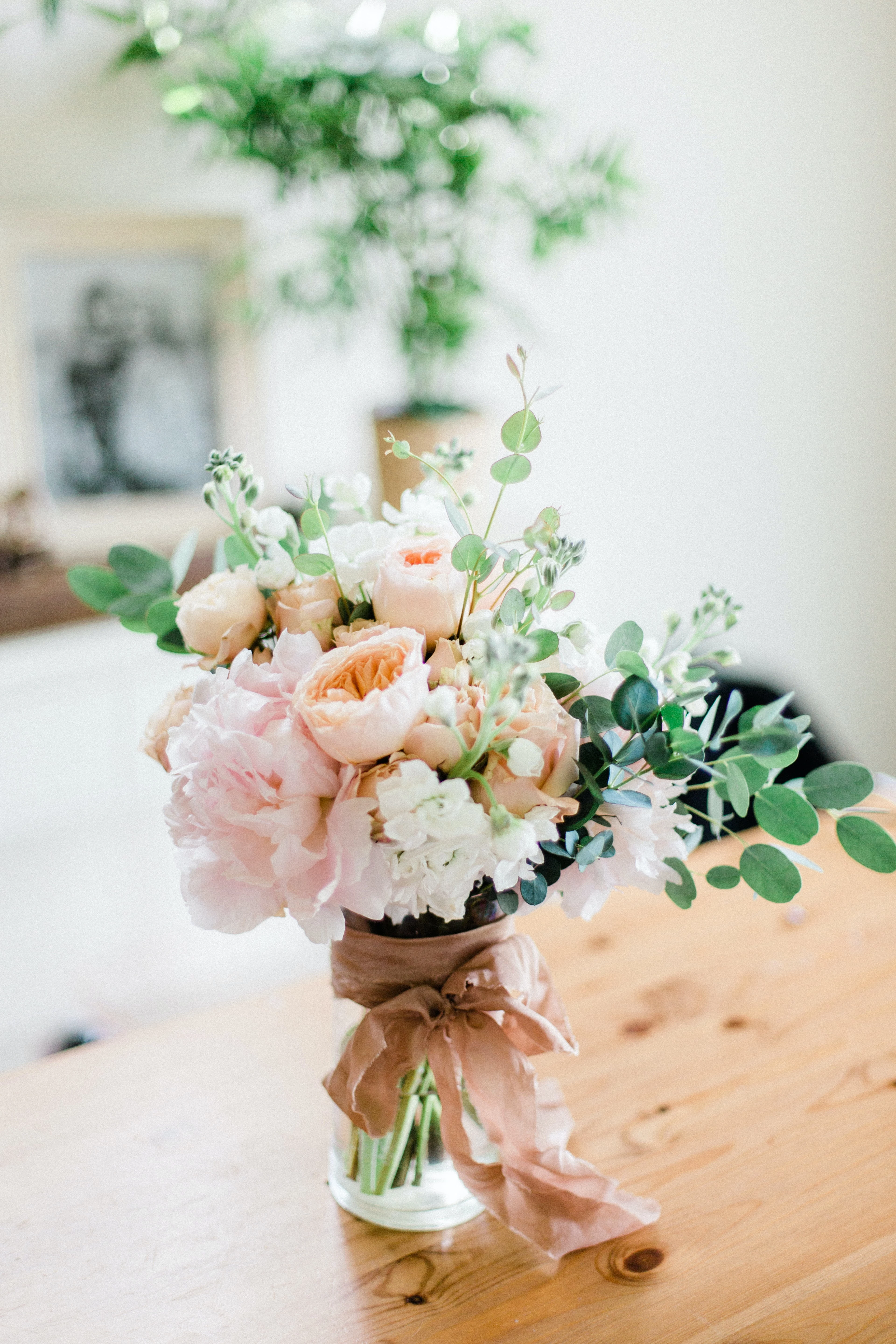
The Simple Science of a Happy Cut Flower
Okay, let’s get into it. What’s actually happening inside that stem? When a flower is still on the plant, it’s hooked up to a life support system of water and nutrients from the roots. The second it’s cut, the clock starts ticking. Its survival now depends entirely on its stem’s ability to act like a straw.
And the two biggest enemies trying to clog that straw are air and bacteria.
Air Bubbles: When you cut a stem in the open air, a tiny air bubble can get sucked right up into its water channels (the fancy term is xylem). This bubble acts like a cork, creating a blockage that stops water from reaching the bloom. Ever had a rose that suddenly got a “bent neck” and flopped over? That was almost certainly an air bubble. It’s a simple fix, and we’ll get to it.
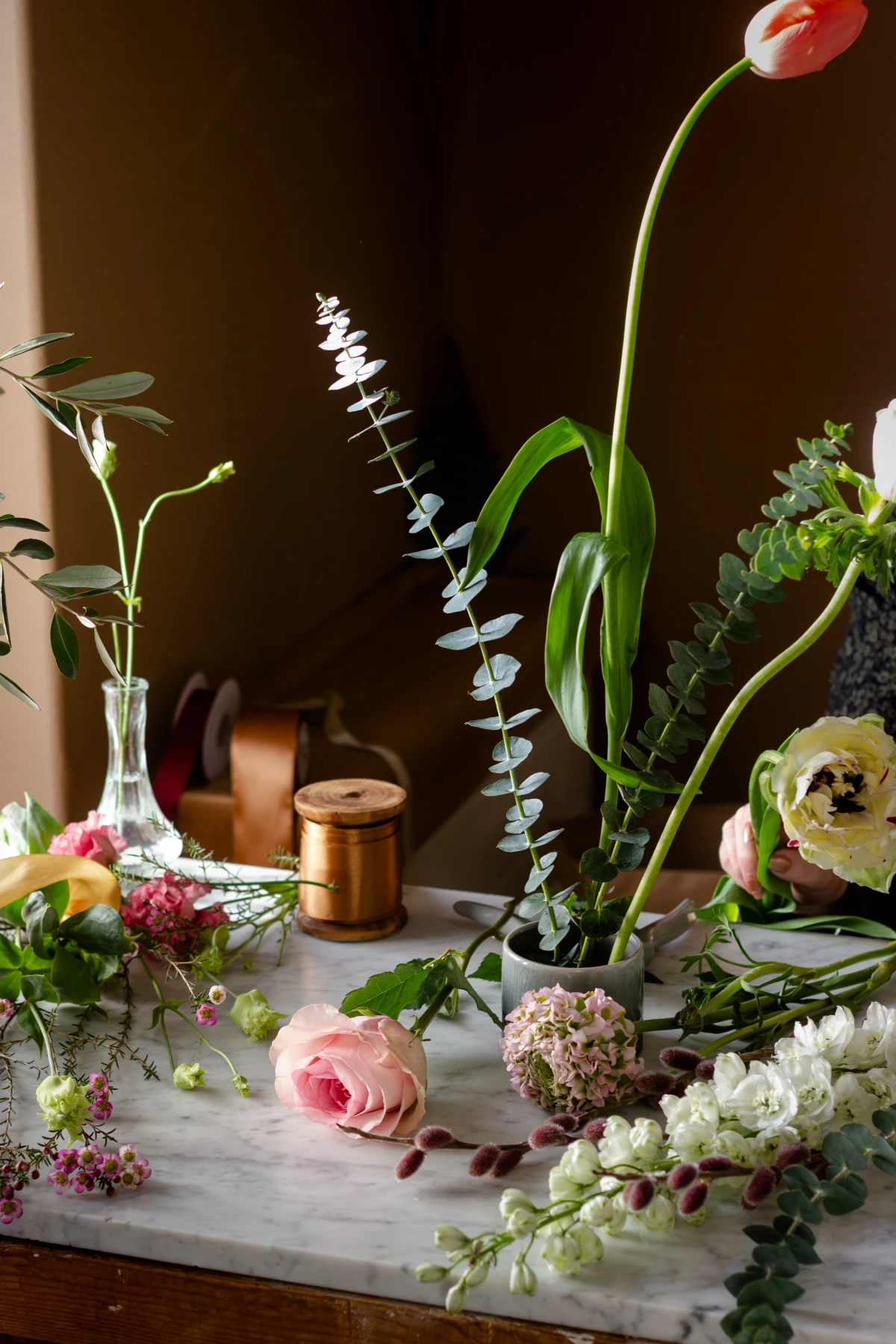
Bacteria: This is the silent killer. Your vase water can turn into a nasty soup of bacteria pretty quickly. This gunk, along with any decaying leaves you forgot to strip, creates a slimy biofilm that physically clogs the bottom of the stems. The flower is literally dying of thirst while sitting in a vase full of water. This is why using a clean vase and fresh water isn’t just a suggestion—it’s non-negotiable.
Heads up on Ethylene Gas: There’s one more invisible threat: ethylene gas. It’s a natural plant hormone that signals ripening and aging. Fruits like apples, bananas, and avocados release a ton of it. So does car exhaust and cigarette smoke. Placing your gorgeous arrangement next to your fruit bowl is probably the fastest way to kill it. Some flowers, like carnations and delphiniums, are extra sensitive to it.
Your Flower Toolkit: What You Actually Need
You don’t need a professional setup, but having the right tools makes a world of difference. And let me tell you, cleanliness and sharpness are everything.
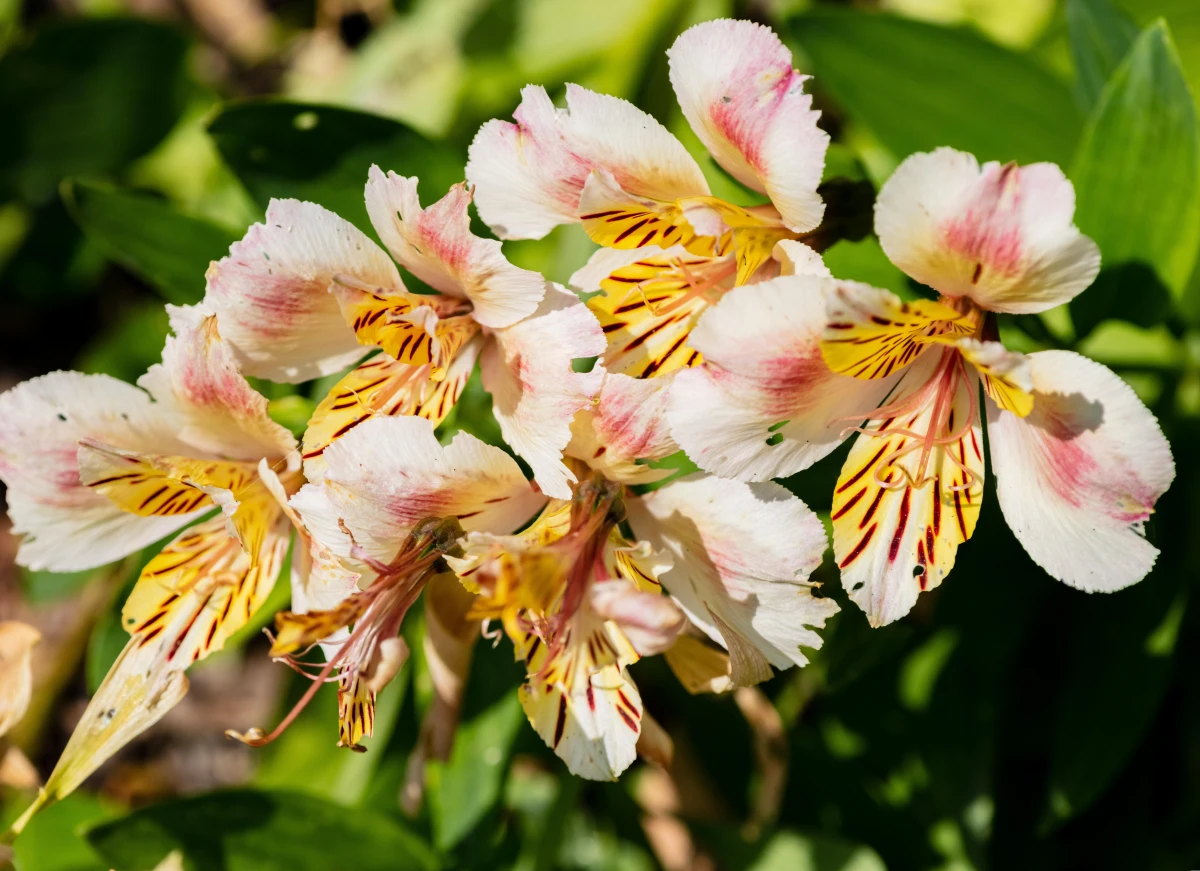
- Something Sharp for Cutting: Professionals often use a dedicated floral knife because it makes a clean, angled slice without crushing the stem’s delicate water-uptake system. But a knife can be tricky if you’re not used to it. So here’s your guide: Best: A real floral knife (you can grab one online for about $15). Better: A pair of sharp, clean floral snips or pruners. Good-in-a-pinch: The sharpest, non-serrated paring knife from your kitchen. Whatever you do, please avoid those dull craft or kitchen scissors; they crush more than they cut.
- Squeaky Clean Vases: I once saw a rookie florist just rinse a bucket that had held gerbera daisies and then fill it with a bunch of expensive garden roses. It was a costly mistake. Within a day, the entire bunch was wilted from a bacterial bloom. At home, just wash your vases with hot, soapy water and a splash of bleach, then rinse them really, really well.
- Flower Food: Seriously, use the little packet. It’s not a gimmick. It contains three things: sugar (food), a biocide (to kill bacteria), and an acidifier (to help the stems drink water more easily). If you run out, a DIY version can work in a pinch: mix 1 quart of water with 1 teaspoon of sugar and just 2-3 drops of household bleach. But honestly, the commercial packets are better balanced and a pack of 50 costs like $10 online.
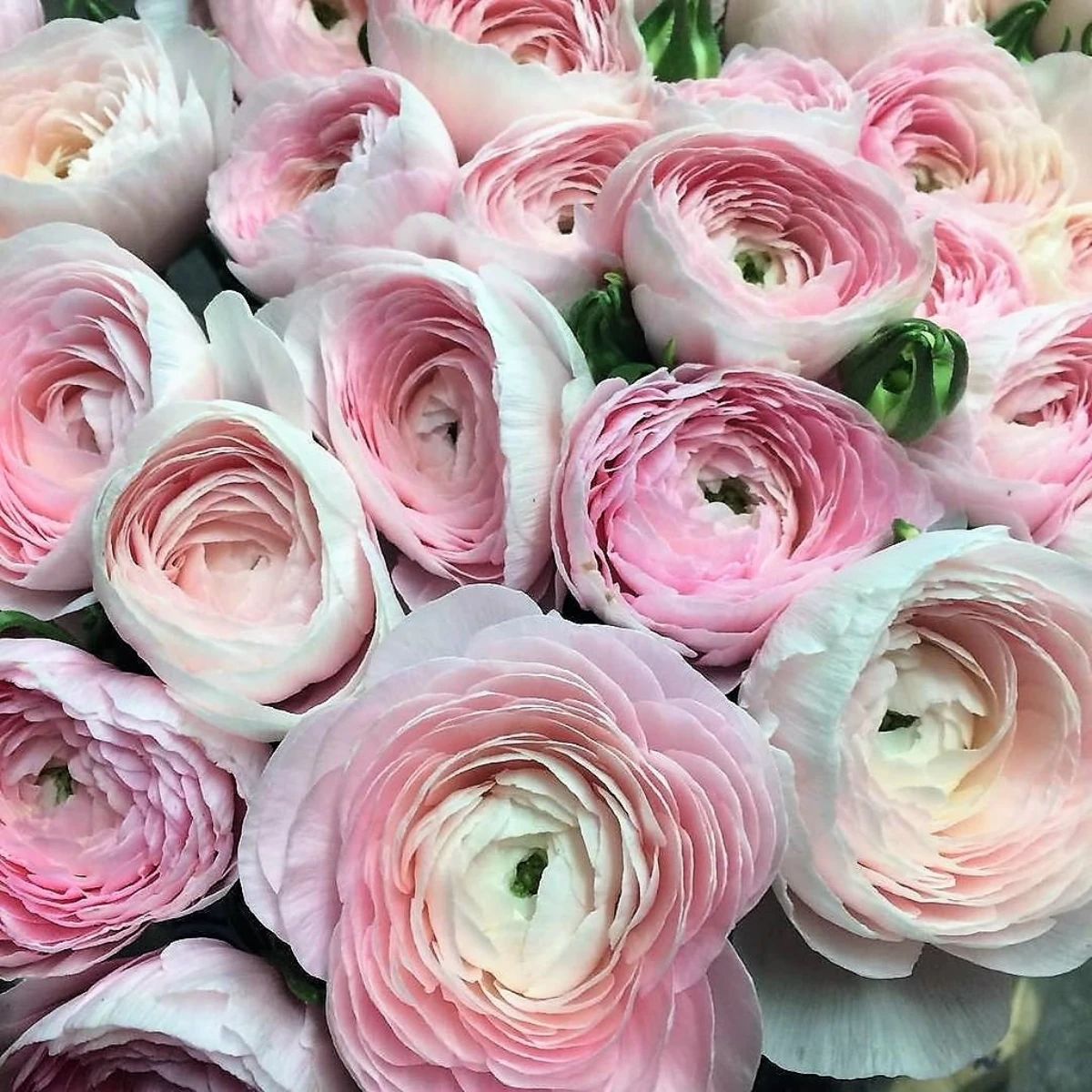
Where to Buy Your Flowers (And What to Expect)
This is a big one. Where you buy your flowers has a huge impact on their quality and price.
- The Grocery Store: The best for convenience and price, but it’s a bit of a gamble. The flowers have often traveled a long way and may have been sitting for a while. Pro Tip: Look for bunches that are still in bud, feel firm, and have vibrant-looking leaves. Avoid anything that’s already fully open or looks a little tired.
- The Farmer’s Market: This is my personal favorite for seasonal gems. You’re often buying directly from the grower, which means the flowers are incredibly fresh and haven’t been shipped across the country. The variety is amazing, especially for things like dahlias and zinnias. You get way more character for your money.
- A Professional Florist: This is your top-tier option. Yes, it’s the most expensive, but you’re paying for quality and expertise. A good florist has access to premium flowers from all over the world, knows how to condition them perfectly, and can guarantee freshness. For a special occasion, it’s worth it.
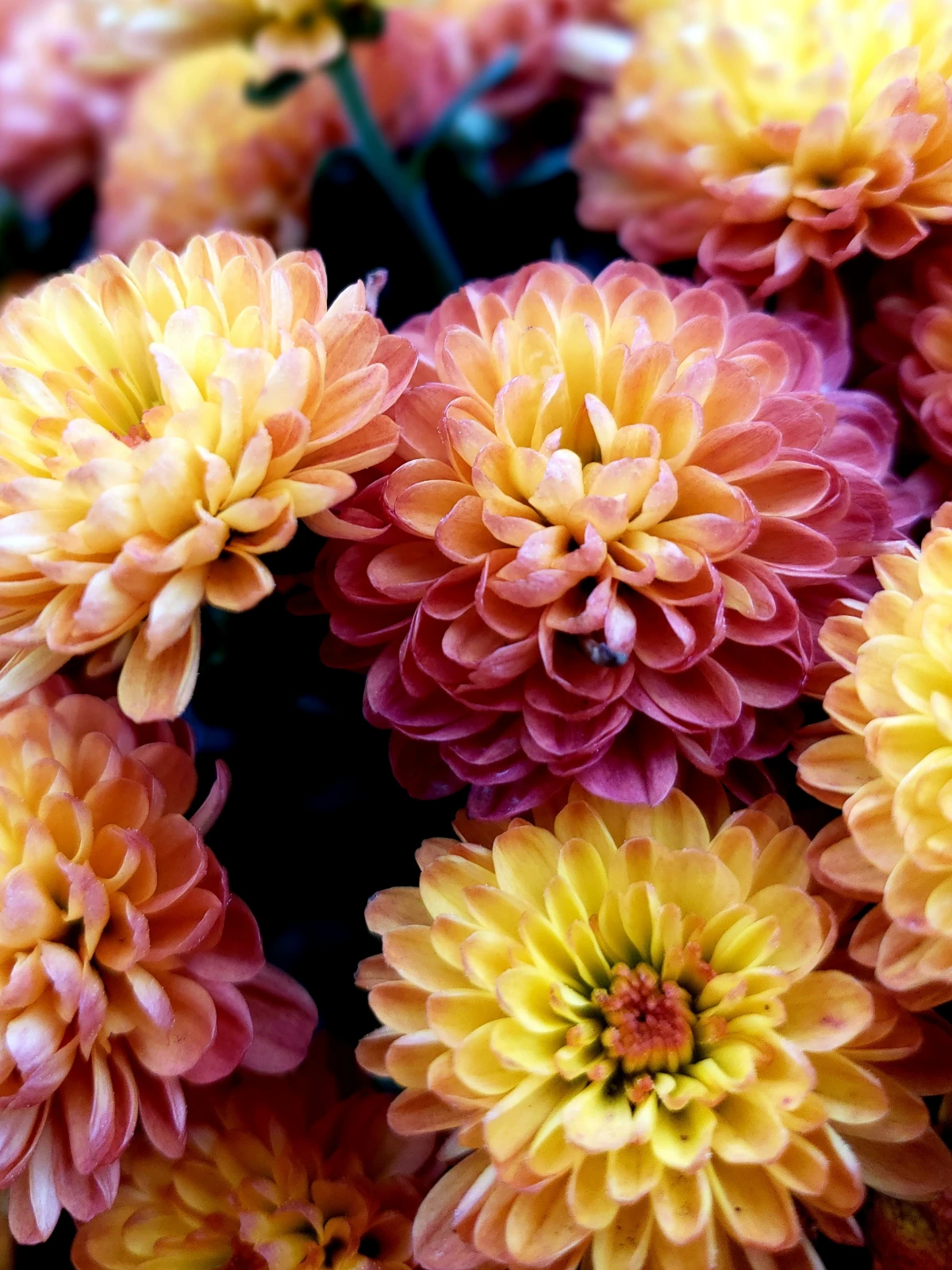
A Pro’s Guide to the Most Common Flowers
I’ve broken these down by how I think of them in the shop: the workhorses, the beauties, and the divas. I’ve also added a rough cost guide and a “care level” so you know what you’re getting into.
(Cost Guide: $ = Budget-Friendly, $$ = Mid-Range, $$$ = Splurge)
The Workhorses: Can Last 10+ Days
These are the tough, reliable flowers that form the backbone of so many arrangements. They offer amazing value for their vase life.
Carnation
Carnations get a bad rap, but a high-quality one is a secret superstar. They can look great for two, sometimes even three weeks.
Cost: $
Care Level: Super Easy
Pro Tips: They are super sensitive to that ethylene gas, so keep them far from your fruit bowl. Their stems have little joints or nodes; always cut between the nodes, not on them, for better water absorption. A fresh one should have a light, spicy, clove-like smell.
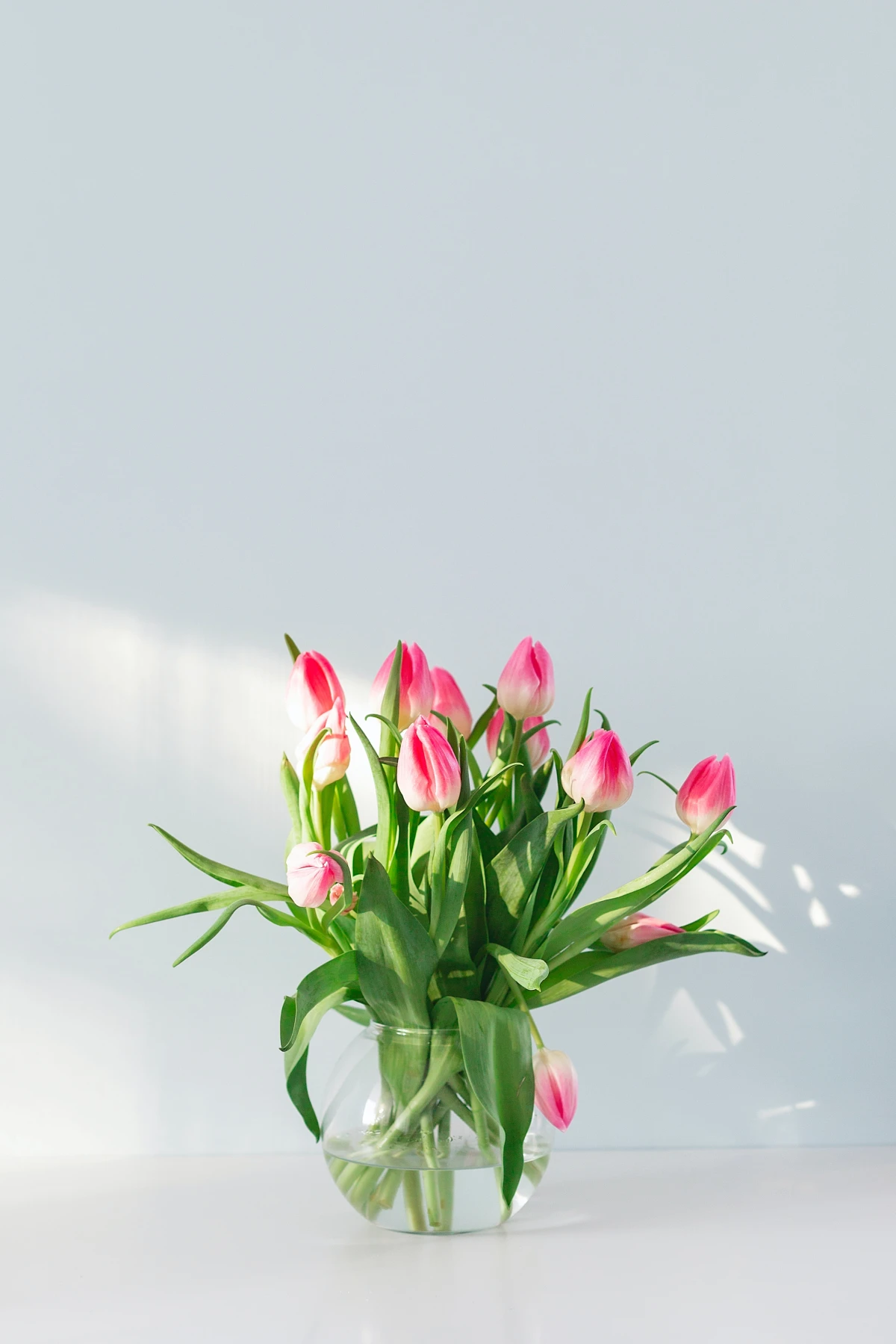
Peruvian Lily (Alstroemeria)
This is another champion of longevity. Each stem has multiple blooms that open up over time, keeping the bouquet looking fresh for up to two weeks.
Cost: $
Care Level: Easy
Pro Tips: Buy them when most of the buds are still closed. You need to strip all the lower leaves—they get slimy in water almost immediately. By the way, some people have a mild skin reaction to the sap, so maybe wear gloves if you’re handling a big bunch.
Oriental Lily
These huge, fragrant lilies are absolute showstoppers and can last for a week or two as new buds open.
Cost: $$
Care Level: Medium (with one HUGE warning)
Pro Tips: As soon as a bloom opens, carefully pull off the stamens with the orange pollen. This stuff will stain everything—fabric, counters, your hands.
CRITICAL SAFETY WARNING: If you have cats, do not bring lilies into your home. Period. Every single part of the plant is lethally poisonous to them. Even a tiny bit of pollen can cause fatal kidney failure. It is absolutely not worth the risk.
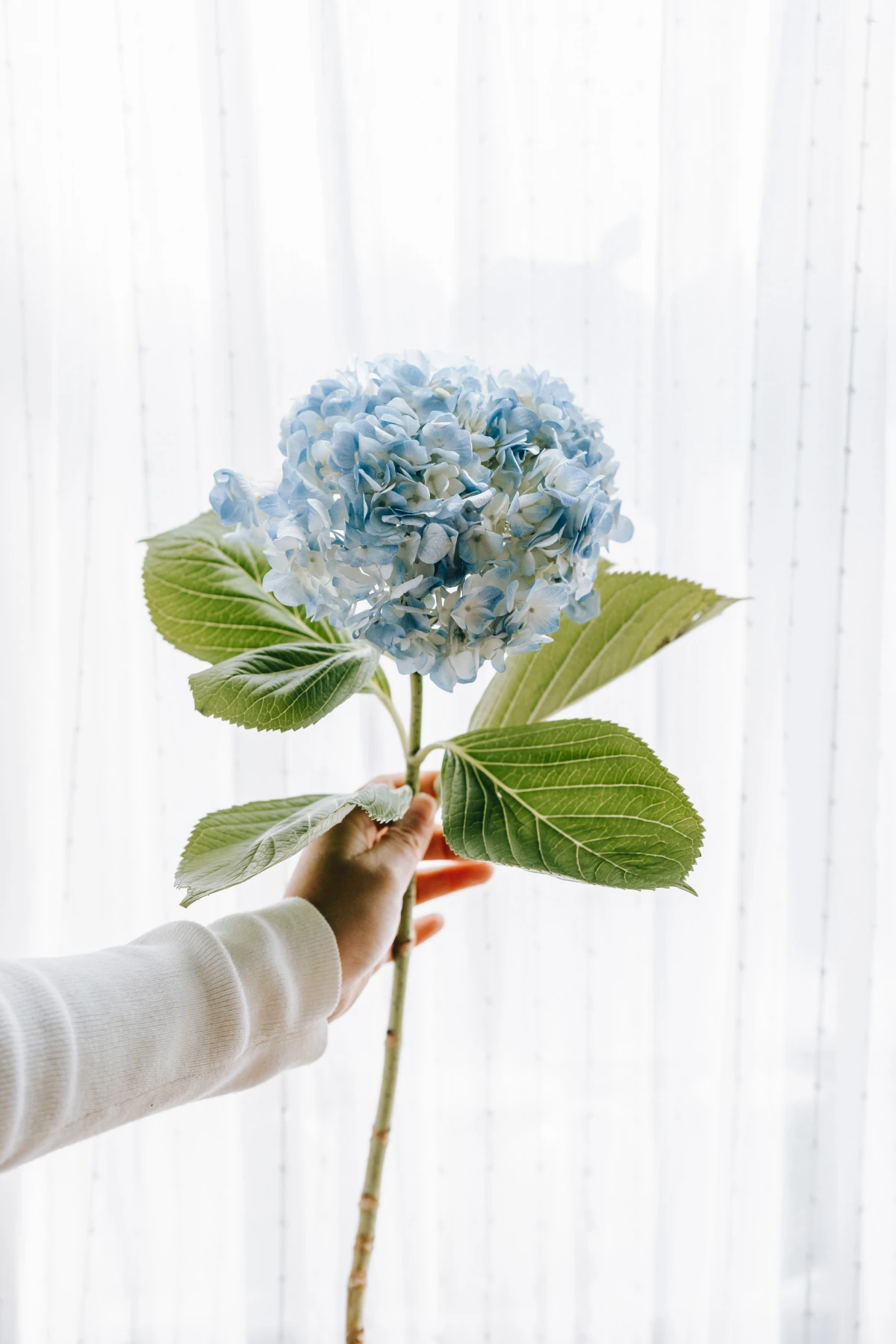
The Dependable Beauties: Lasting 5 to 9 Days
This group includes some of the most popular flowers out there. They need a little more love but are so worth it.
Rose
A good quality rose should easily last a week. If yours doesn’t, it was probably old or mishandled before you even bought it.
Cost: $$ (can be $$$ for premium varieties)
Care Level: Medium
Pro Tips: Before you do anything else, remove the outer “guard petals.” These are the two or three tough, often brownish petals on the outside of the bud. They’re there to protect the rose during shipping. Peeling them off lets the rose open up properly. If a rose head droops (the dreaded “bent neck”), you can often revive it! Re-cut the stem under water, then lay the entire rose in a sink of cool water for about 30-60 minutes. This often fixes the air bubble issue.
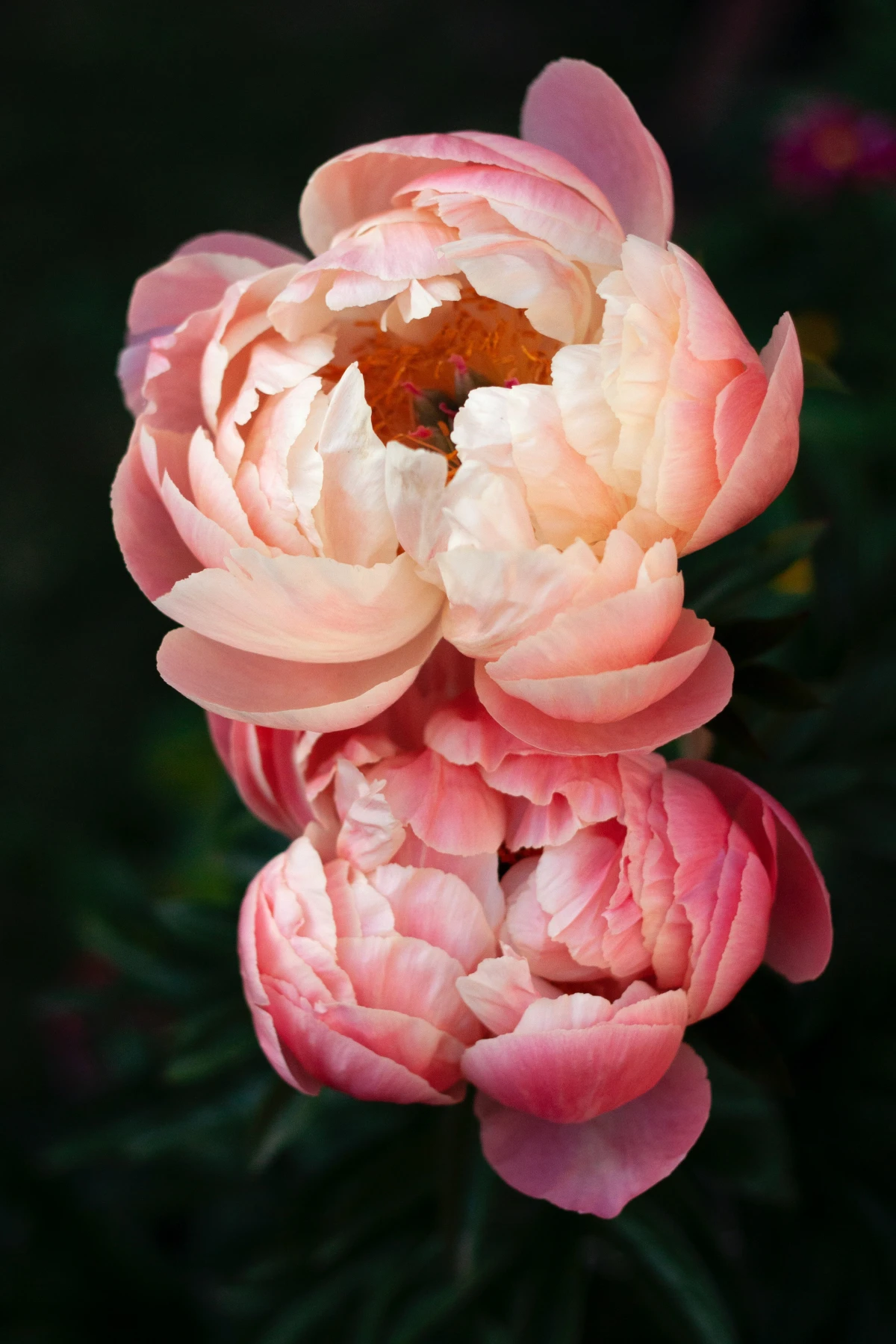
Tulip
Tulips are wonderful, but they play by their own rules. They continue to grow in the vase and will bend and stretch towards light. I personally love this, but if you want them to stay straight, you can gently poke a pin through the stem just below the head (an old florist’s trick).
Cost: $$
Care Level: Medium
Pro Tips: Embrace their natural movement! Arrange them with room to dance a little. They drink a lot of water, so keep an eye on the vase level.
Hydrangea
A single hydrangea bloom is basically an arrangement in itself. But oh boy, is it thirsty.
Cost: $$
Care Level: High Maintenance Diva
Pro Tips: If your hydrangea wilts dramatically, don’t panic. Fill a sink with cool water and float the entire flower, head and all, for about 45 minutes. It will often pop right back to life. Some pros also dip the cut stem in alum powder (from the spice aisle) to help with water uptake.
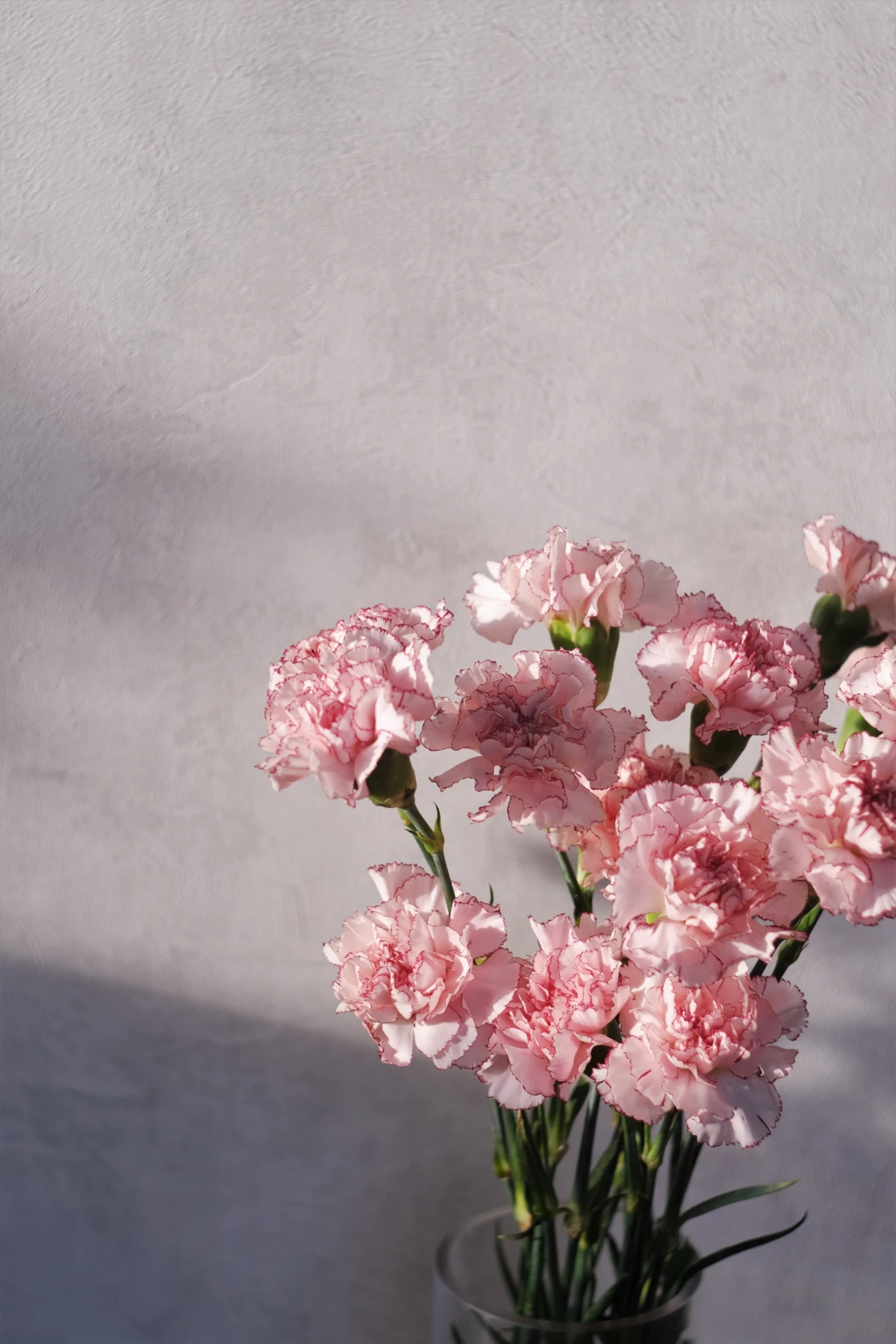
The Short-Lived Stars: Under 5 Days
These flowers are divas. They are breathtakingly beautiful but have a very short vase life. Save them for a special occasion when you want maximum impact for a few days.
Dahlia
The heartbreaker of the flower world. A 3- to 5-day vase life is pretty standard, and they are worth every second.
Cost: $$$ (especially for dinner plate varieties)
Care Level: Pro-Level
Pro Tips: Dahlias have hollow stems and wilt fast. The secret is to sear the stem. Immediately after cutting, dip the bottom inch of the stem into boiling water for 10-15 seconds. You’ll see tiny bubbles escape. Then plunge it into cool water to hydrate for a few hours. This step is not optional for dahlias.
Peony
The peony season is a beautiful, frantic rush. They last about 5 days once they are fully open, and what a show they put on.
Cost: $$$ (due to very short seasonal availability)
Care Level: High Maintenance Diva
Pro Tips: Buy them when they are in a tight bud that feels like a firm marshmallow. If a bud seems stuck, it might have a sticky sap on it. Gently wipe it with a damp cloth or run the bud under a quick stream of lukewarm water to help it open.
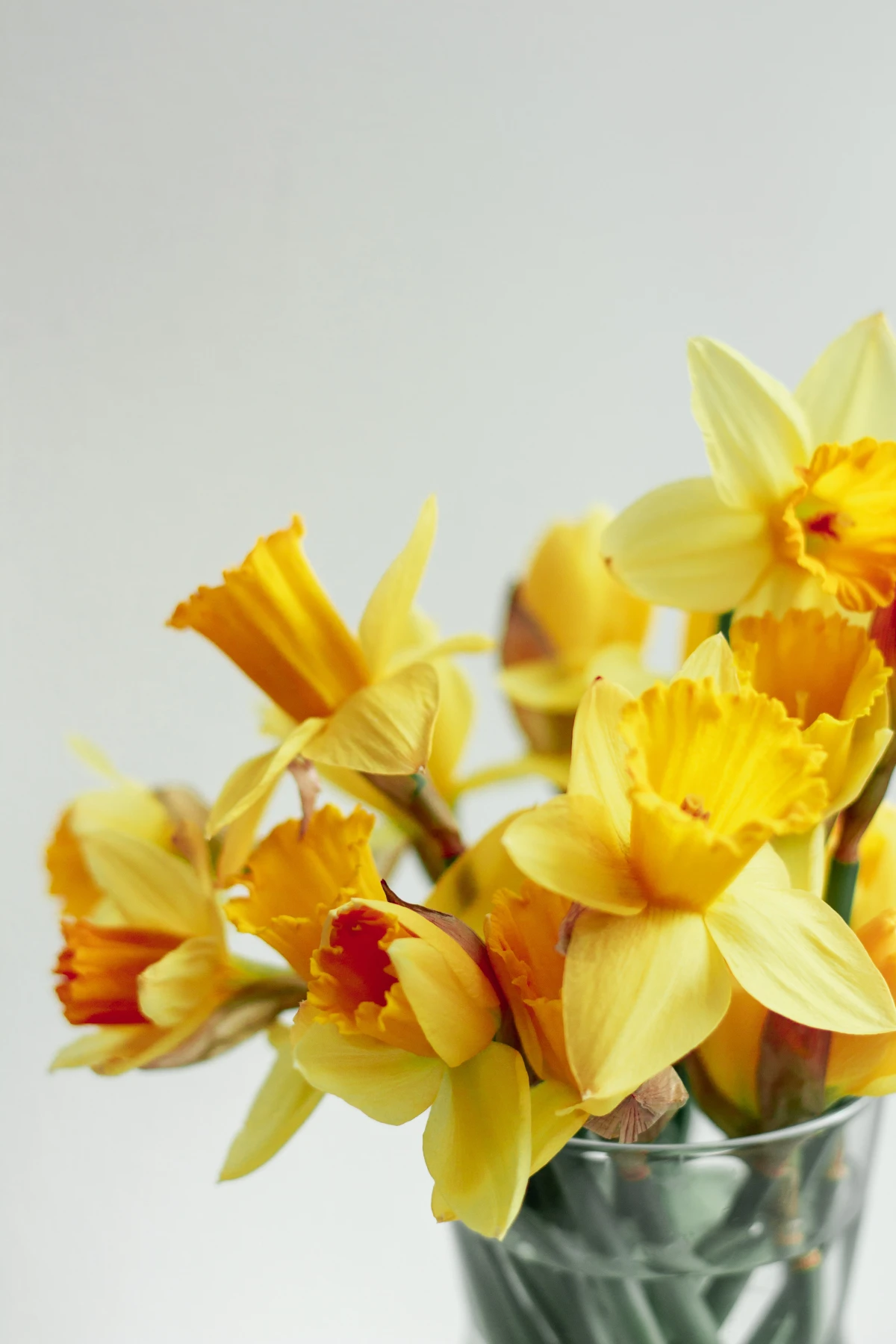
Daffodil (and a note on “Bad Neighbors”)
Daffodils are a joy, but they have a dark secret: they release a slimy sap that is toxic to other flowers.
Cost: $
Care Level: Easy, but with a critical rule
CRITICAL MIXING WARNING: You cannot put freshly cut daffodils in an arrangement with other flowers. The sap will kill your tulips and roses in a day. I learned this the hard way on a big wedding centerpiece. To use them in a mixed bouquet, you MUST cut them and let them sit in their OWN bucket of water for at least 12 hours. This lets the sap drain out. After that, you can add them to your main vase, but don’t re-cut their stems, or the sap will start flowing again. This is the most common “bad neighbor” flower, but generally, it’s a good idea to let woody stems like hydrangea or lilac hydrate in their own water for a bit before mixing with softer-stemmed flowers.
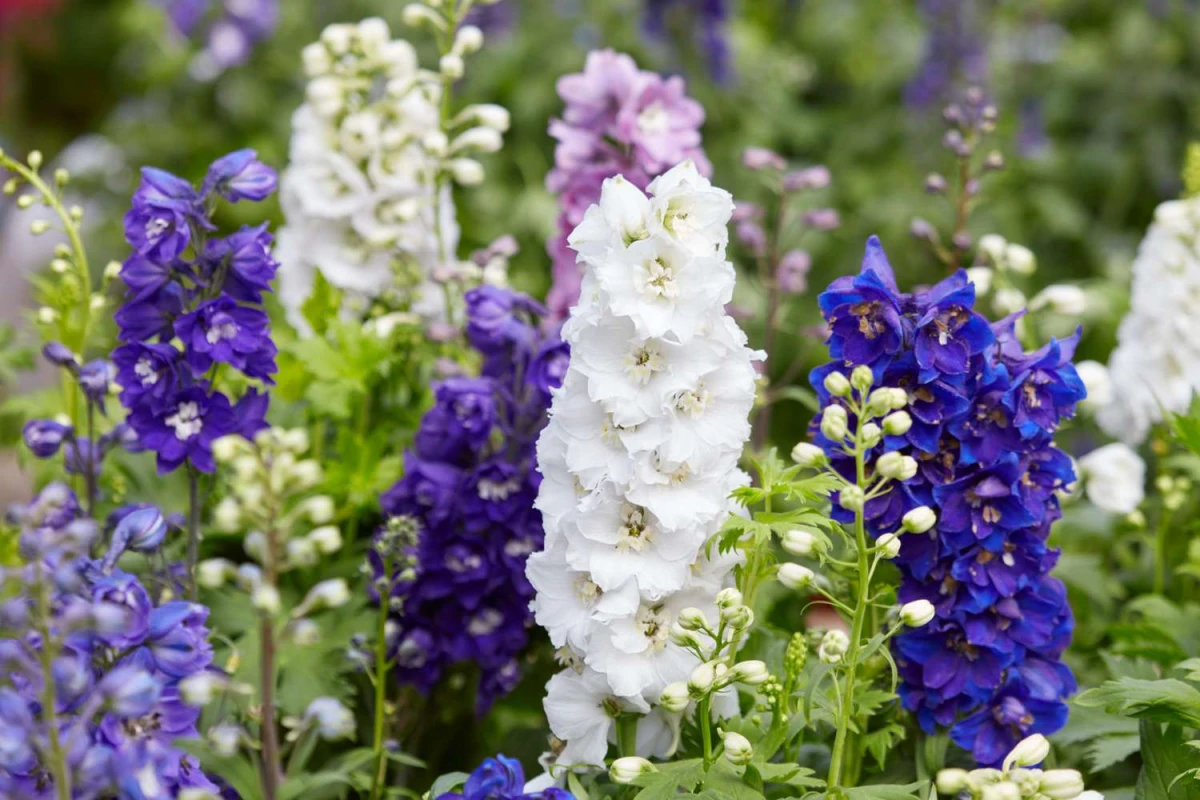
A Quick Note on Seasons
Thinking seasonally will save you money and get you better flowers. Here’s a quick cheat sheet:
- Best buys in Spring: Tulips, Daffodils, Peonies, Ranunculus
- Best in Summer/Fall: Dahlias, Sunflowers, Zinnias, Hydrangeas
- Year-Round Champs: Roses, Carnations, Alstroemeria, Lilies
The Pro Conditioning Process: Step-by-Step
Quick Win: In a hurry? The two things that will give you the most bang for your buck are giving every stem a fresh cut and using clean water with flower food. Do just that, and you’ve won 80% of the battle.
For the full treatment, here’s the exact process we use in the shop:
1. Get Your Station Ready. Before the flowers even come through the door, have a clean vase ready, filled with cool water and the correct amount of flower food mixed in.
2. Strip Those Leaves. Unpack the flowers right away. Strip off any and all leaves that will fall below the waterline. This is the #1 cause of that nasty bacteria soup.
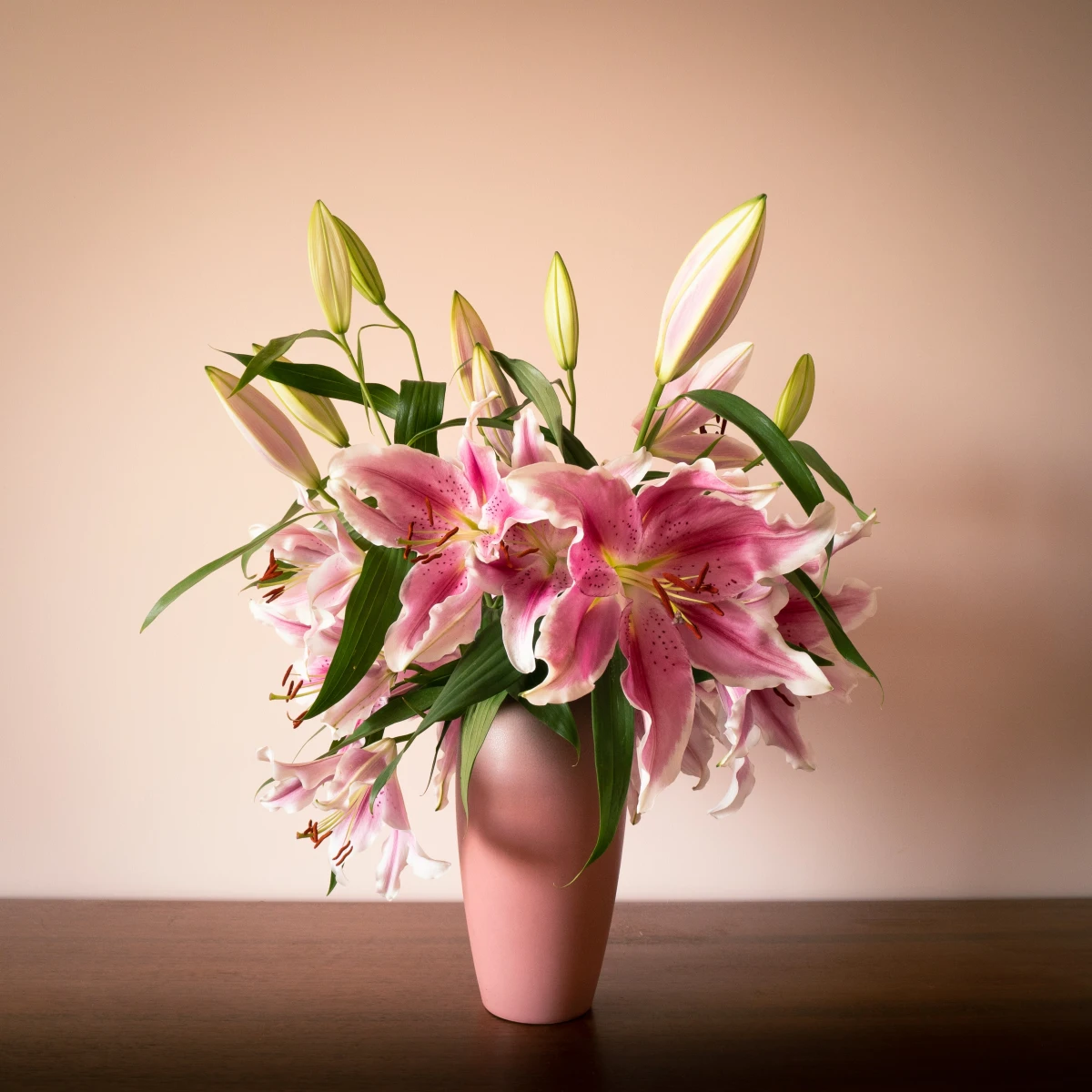
3. Cut Under Water. This is the game-changer. Fill your sink or a small basin with a few inches of water. Submerge the bottom of the stem and then make your cut. This prevents that dreaded air bubble. Cut at least an inch off the stem at a sharp 45-degree angle to create more surface area for drinking.
4. Let Them Drink. Place the freshly cut flowers immediately into your prepared vase. Then, if you have the time, put the whole vase in a cool, dark place (like a basement, a cool bathroom, or even the fridge for an hour) for a few hours. This “hardening off” period lets them get fully hydrated before they have to deal with the stress of a warm room.
5. Maintain, Maintain, Maintain. Every two days, swap out the water completely, give the vase a quick wash, and give the stems another fresh snip. It takes two minutes and can double your flowers’ life.
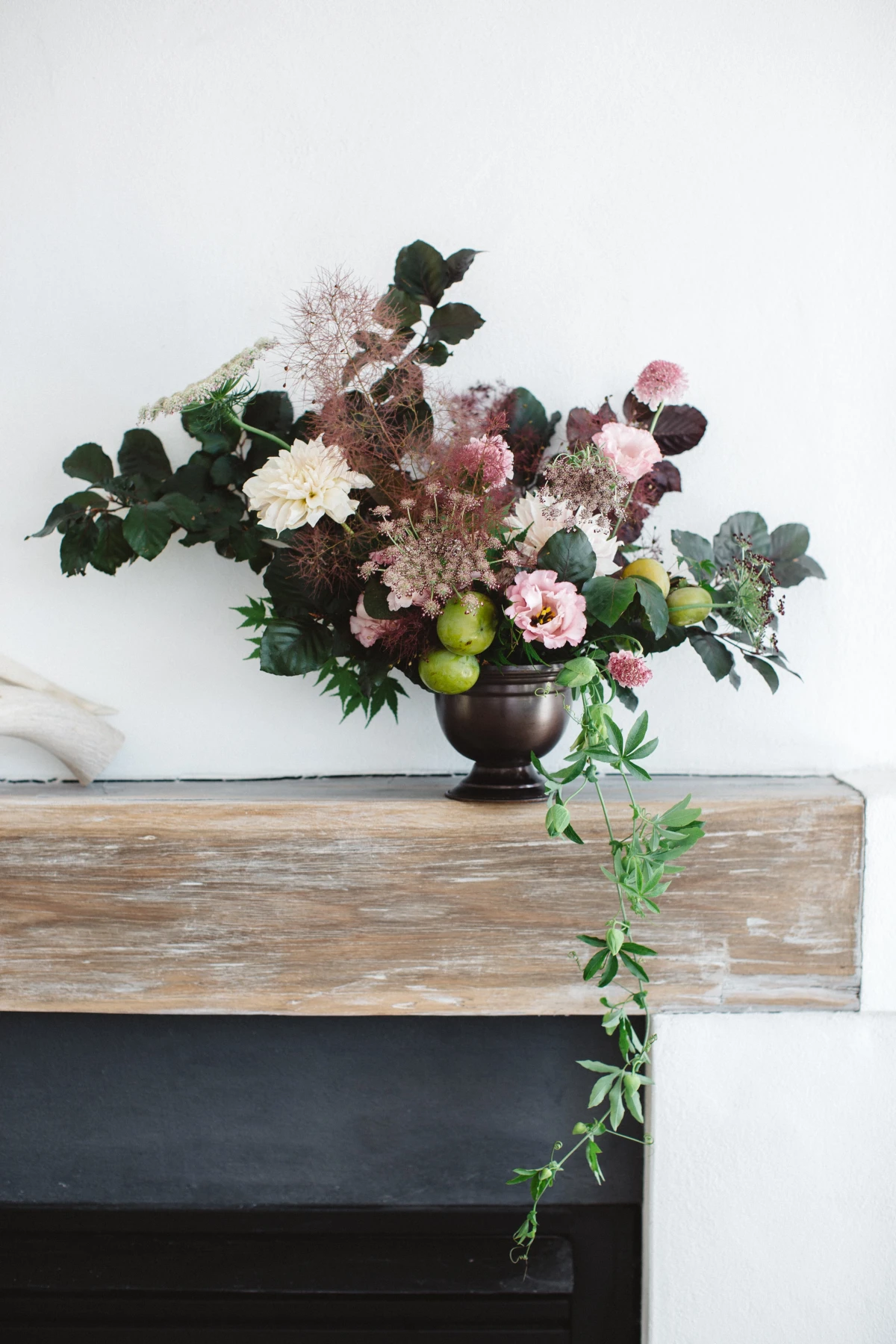
Troubleshooting a Sad-Looking Bouquet
Even with the best care, sometimes things go wrong. Here’s the quick fix guide:
- The Bent-Neck Rose: Almost always an air bubble. Try the revival trick: re-cut the stem under water and submerge the whole flower in cool water for an hour. It works more often than not.
- The Suddenly Wilting Hydrangea: This flower is a drama queen. It just needs more water than its stem can provide. Use the full submersion method mentioned earlier. Float the whole thing in a sink of water.
- Cloudy, Smelly Water: Emergency! This is a bacterial bloom. Take all the flowers out immediately, scrub the vase with soap, and give every single stem a fresh cut before putting them back in fresh water with new flower food.
Honestly, getting your flowers to last is about more than just buying a pretty bunch. It’s about understanding what they need and putting in a little bit of effort. When you take the time to care for them properly, you’re not just a spectator anymore. You become part of their brief, beautiful life. And that connection, I think, is what makes having flowers in your home so incredibly special.
Inspirational Gallery with Photos
Floral Snips: Designed with a bypass blade, they make a clean slice through the stem without crushing its water-uptake channels (xylem). This is crucial for hydration.
Kitchen Scissors: Their pinching action can mash the stem’s delicate vascular system, blocking water absorption from the very start.
For a long-lasting arrangement, a dedicated pair of snips is a small investment that pays off with every bouquet.
A single ripe apple placed nearby can produce enough ethylene gas to cause a fresh bouquet to wilt prematurely.
This invisible gas is a natural ripening agent for fruit, but it signals flowers to age, droop, and drop their petals. Always keep your arrangements far away from the fruit bowl—it’s one of the most common and easily avoided bouquet killers.
My hydrangeas wilted overnight! Can they be saved?
Yes, there’s a rescue mission for this common issue! Hydrangeas have woody stems and can struggle with water uptake. To revive them, re-cut the stems at an angle and then completely submerge the entire flower head and stem in a sink of cool water for about 30 minutes. This super-hydration method, absorbed through the petals themselves, can often bring them right back to life.
Don’t throw out that little packet: It’s a scientifically formulated meal. Flower food from brands like Chrysal or Floralife contains three key ingredients: a sugar for energy, an acidifier to help the stems drink (by lowering the water’s pH), and most importantly, a biocide to kill off the stem-clogging bacteria the main article warns about. It’s a critical first step.
Think beyond just flowers and consider the foliage. The right greens not only add structure and a lush feel but often outlast the blooms, extending the life of your arrangement as you remove spent flowers.
- Eucalyptus: Varieties like Silver Dollar or Baby Blue offer beautiful shapes and a fresh scent, lasting for weeks.
- Italian Ruscus: A florist’s favorite for its incredible durability and elegant, delicate look.
- Leatherleaf Fern: The classic, sturdy filler that provides a long-lasting base for any design.
- Vibrant, full blooms from woody branches like lilac, forsythia, or viburnum.
- Stems that can actually support and hydrate their heavy flower heads for days.
The secret? Conditioning. After cutting, use a small hammer to gently smash the bottom inch of the stem, or use your snips to make a vertical slit. This breaks up the tough exterior, dramatically increasing the surface area for that all-important water uptake.
The Japanese art of Ikebana is built on the principle of giving life to flowers.
This ancient practice offers a powerful lesson in longevity. Rather than a dense bunch, it emphasizes the line, form, and negative space of each individual stem. This minimalist approach not only creates a serene display but also improves air circulation around each flower, reducing the risk of decay and celebrating the full lifespan of every single bloom.
The Long-Haul Crew
For a bouquet that truly goes the distance, build your base with these famously durable flowers. They provide color and texture for weeks, allowing you to simply swap out more delicate companion blooms as they fade.
- Alstroemeria: Easily lasts two weeks, with new buds on the stem continuing to open.
- Carnations: These ruffled workhorses can look fresh for up to three weeks with proper care.
- Chrysanthemums: Incredibly hardy, these come in a huge variety of pom-pom, spider, and daisy shapes that refuse to quit.










